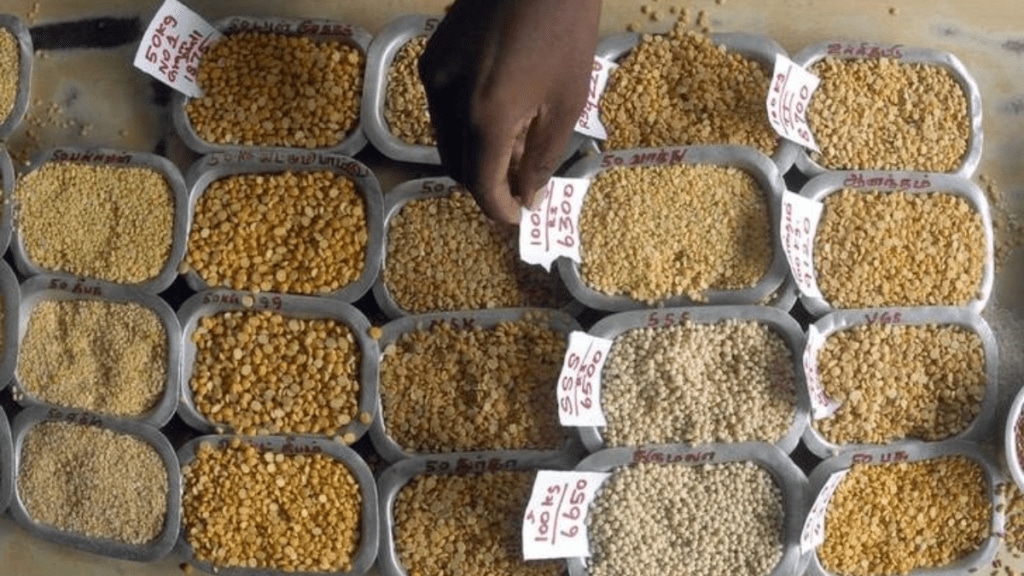The country’s import of pulses is likely to decline to 4 to 4.5 million tonne (MT) in the current fiscal from a record 4.73 MT in the FY24 because of adequate monsoon rain and substantial imports last fiscal, Bimal Kothari, chairman, India Pulses and Grains Association (IPGA) on Friday said.
“We are expecting a higher kharif output because of good monsoon rains so far and in addition because of higher soil moisture, rabi or winter crops are likely to be robust,” Kothari told FE at the sideline of ‘Bharat Dalhan seminar 2024’.
He said the country has imported 2 MT of yellow peas so far another MT of pulses are at the port which would be sufficient for domestic supplies.
He said that last year pulses production was hit by El Nino impact, the production in the 2023-24 crop year (July-June) declined by 6% to 24.49 MT from 26.05 MT in 2022-23 crop year.
Kothari said that the prices of pulses in wholesale markets have come down in the last one month and are expected to ease further. Tur prices have come down by Rs 20 per kg in wholesale markets in the past one month.
“Pulses prices will not increase this year, rather it will keep falling,” he said.
Because of above-normal monsoon rainfall so far, area under kharif pulses such as tur, urad and moong rose sharply at 10.9% to 11.06 million hectare on year till August 3, which is expected to boost pulses production in the 2024-25 season.
To meet the rising demand, India’s import of pulses rose by 90% on year to 4.73 MT during 2023-24 to meet domestic demand.
India imports about 15% of its annual pulses consumption. Import of pulses stood at 2.46 MT in 2020-21, 2.69 MT in 2021-22 and 24.96 MT in 2022-23.
An official, wholesale prices of key pulses have declined by 8% in the last few weeks According to the consumer affairs ministry, the modal retail prices of tur, whose prices rose highest 26.86% in June on year, has declined to Rs 160/kg on Friday, a decline of 8.5% on month.
“The declining trend in mandi prices is now reflected in retail prices in recent weeks as the all-India average retail prices of pulses have declined on a week-on-week basis,” according to an official note.
This is expected to bring down inflation in pulses, which had been in double digit since June, 2023 in the next couple of months.
Meanwhile, Ashok Gulati, agricultural economist and former chairman, commission for agricultural costs and prices (CACP) said with the increase in production not comusurage with demand, the country is likely to import 8 – 10 MT of pulses by 2030 if ‘business as usual approach goes’. For boosting pulses output, Gulati has suggested the farmers in Punjab and Haryana to be given financial incentives of Rs 35,000/hectare for switching from paddy to pulses and the government should ensure pulses procurement at minimum support price (MSP).

